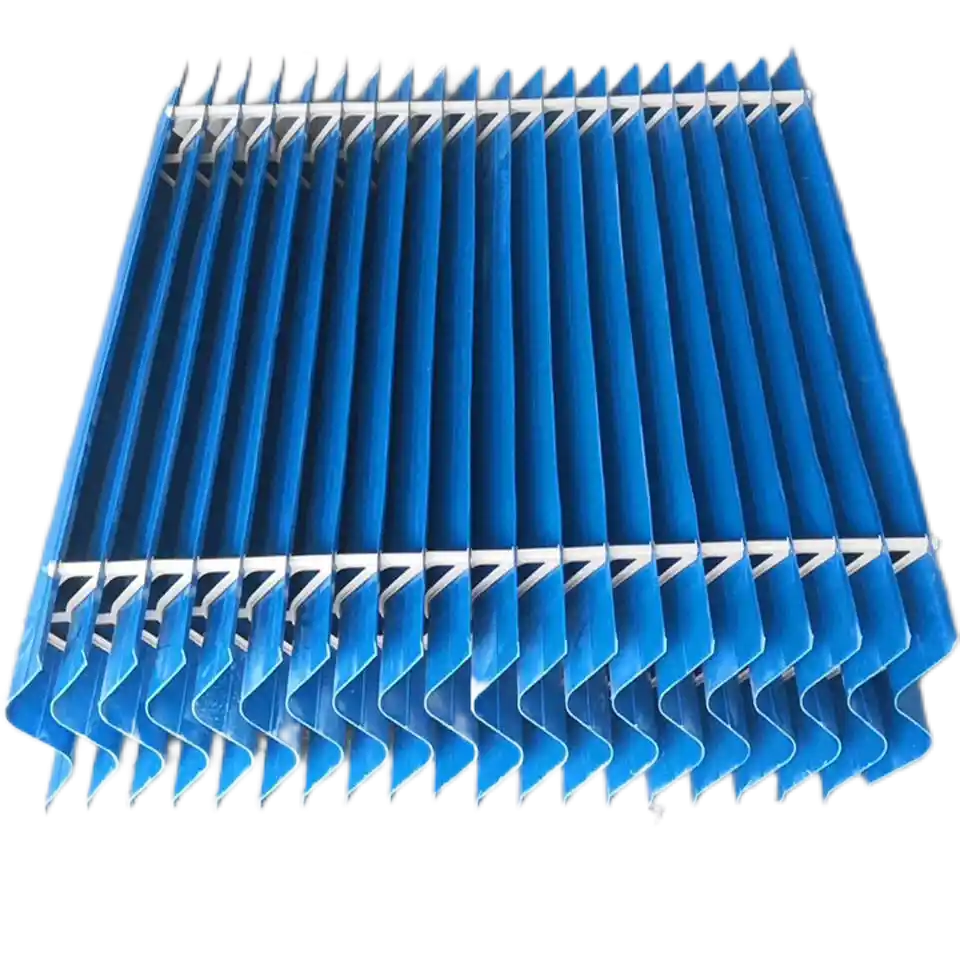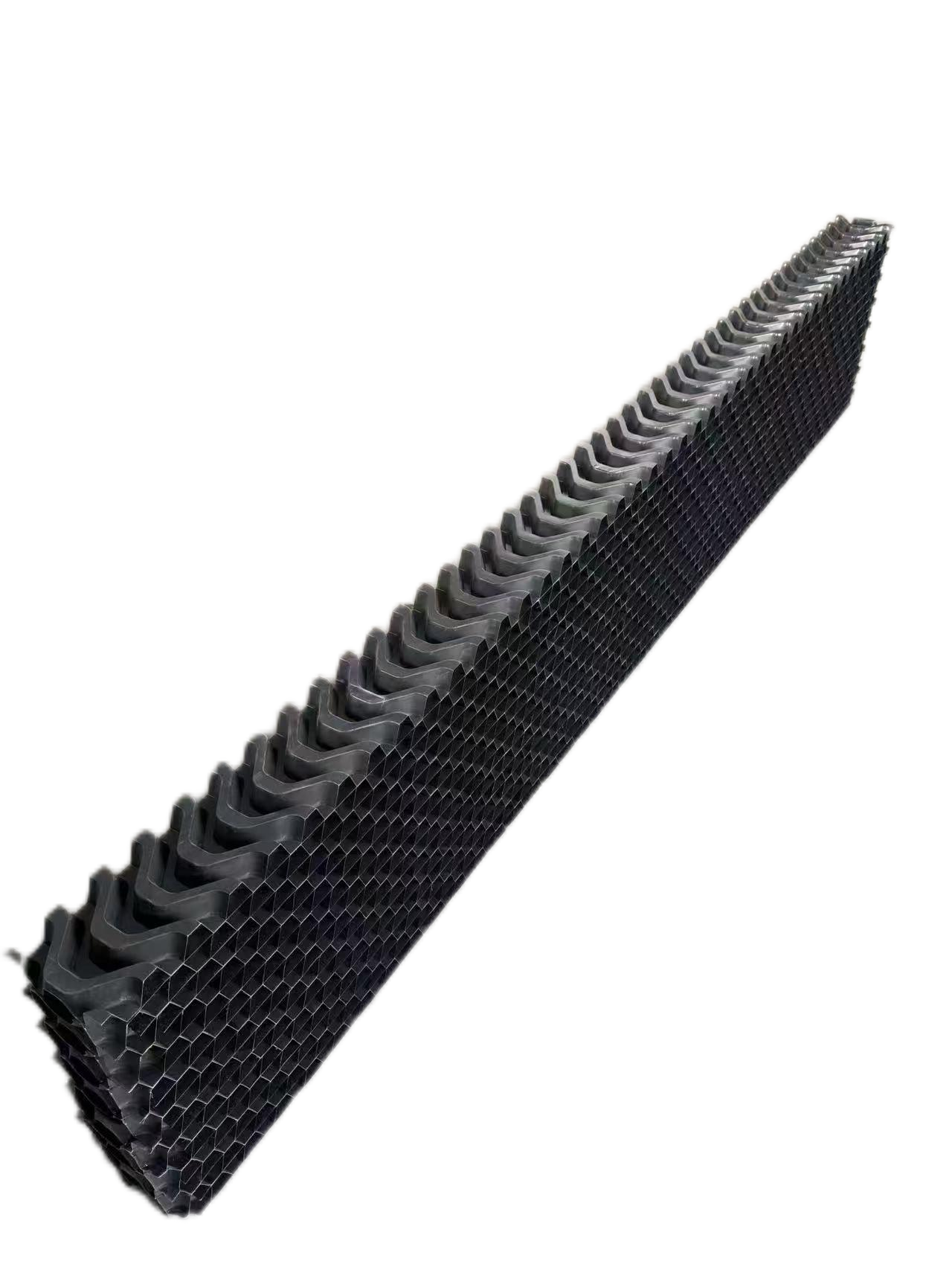Drift eliminators are used in cooling towers to retain droplets that could potentially escape into the environment. They should be installed in towers containing fans but are not necessary in low-velocity natural draft towers. This helps to reduce the negative impact by pulling droplets back into the tower.
Features
- Made of PVC or PP , solvent free, UV resistant
- High droplet separation
- Very low pressure drop
- Good mechanical strength with different thickness
- Easy and fast installation of compact elements
- Multiple welding point for long lifetime
Air pressure drop calculation
To calculate the wind pressure change (i.e. air pressure drop) of drift eliminator, the following key parameters are required:
(1) Drag coefficient (ξ): dependent on the material and structural shape of the drift eliminator and formula;
(2) Air density (P): Under standard conditions (20℃, 1 atmosphere), ρ≈1.205 kg/m3;
(3) Calculation formula: Wind pressure change △ P=ξ*½pv 2
Drag coefficient of common types of drift eliminators:
- Ripple plate drift eliminator: ξ≈1.5~3.0 (Depending on the corrugation spacing and plate thickness)

- Shutter type drift eliminators: ξ≈2.0~4.0 (Closely related to blade angle and spacing, the larger the angle, the higher the resistance)

Calculation process
Known conditions
- Drag coefficient (ξ): 2.2
- Air density (p): 1.205 kg/m3 ·
- Airflow velocity (v): 3 m/s
Calculation formula
The pressure drop (△ P) of a drift eliminator is usually calculated using the following formula: △ P=ξ*1/2pv 2 .
Remark: ½pv 2 . is dynamic pressure.
Computational procedure
- Calculate dynamic pressure:
Dynamic pressure=½x1.205x (3) ²=0.5 x 1.205 x9=5.4225Pa
- Calculate the pressure drop △ P:
△P=2.2 x 5.4225 ≈11.93 Pa
Result
The air pressure change (pressure drop) of the water collector is ≈11.93 P